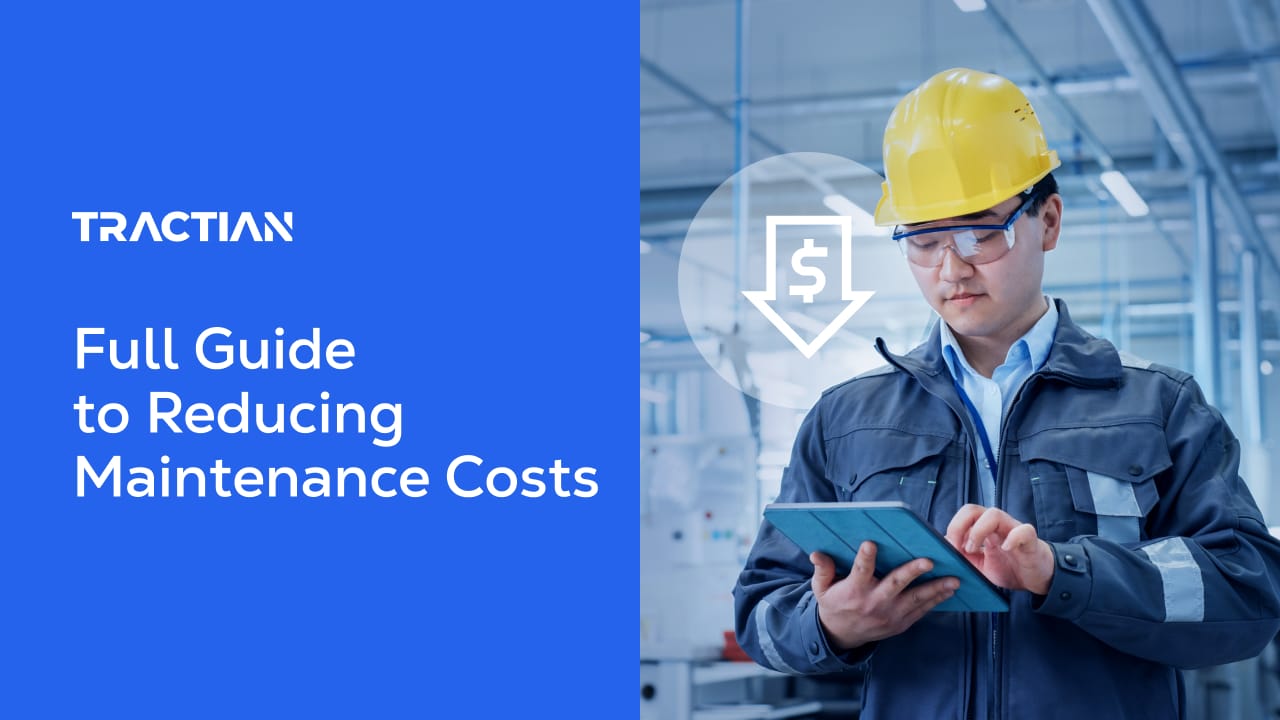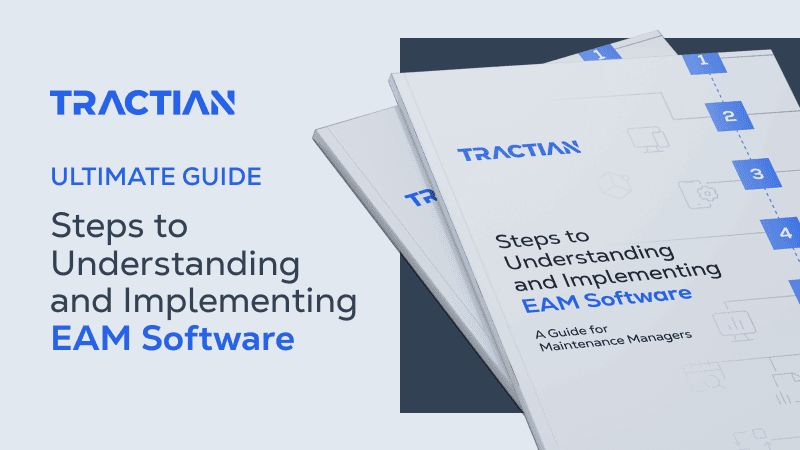Keeping your production floor running smoothly takes more than just tightening bolts. Maintenance expenses can account for 15% to 40% of total operational costs, as noted in early research by Dunn (1987) and Lofsten (2000).
But why consider and compare decades-old data to today’s industry?
Because the core challenge remains the same: neglecting maintenance today leads to higher costs, with unexpected breakdowns and emergency repairs down the line.
With that in mind, let’s explore proven strategies to cut maintenance expenses-starting with a key principle: you can’t reduce what you don’t fully understand.
Keep reading to learn how smarter maintenance practices can protect your bottom line.
What Are Maintenance Costs?
Industrial maintenance costs extend beyond spare parts and service calls. They cover everything required to keep production running smoothly, ensuring efficiency and preventing unexpected downtime.
Maintenance is a necessary headache for many managers-an unavoidable disruption that slows operations and inflates costs.
But there's another perspective that sees maintenance beyond its expenses. With today's cutting-edge technology and methodologies, maintenance becomes a revenue driver and a strategic investment that provides reliability, efficiency, and long-term savings.
Balance the Costs, Reap the Rewards
A well-structured maintenance program prevents breakdowns, keeps production running smoothly, ensures compliance with safety standards, and reduces costly disruptions.
Balancing short-term costs with long-term benefits avoids downtime, protects profitability, and maximizes operational efficiency.
However, actualizing this perspective and its benefits is where different maintenance strategies come into play.
The Role of Maintenance in Industrial Success
With the right approach-one that integrates preventive, corrective, and predictive maintenance-you can transform maintenance from a cost burden into a competitive advantage.
Let’s break down these key strategies:
- Preventive Maintenance: A proactive defense that prevents unexpected failures through scheduled inspections and upkeep.
- Corrective Maintenance: The go-to solution for addressing issues as they arise.
- Predictive Maintenance: A data-driven strategy that identifies potential failures before they occur.
Types of Industrial Maintenance
Before building an effective maintenance strategy, you need a solid understanding of the different maintenance approaches available.
Each method follows its own philosophy and execution. These will sound familiar to those working in this industry - but let’s break them down for clarity.

Corrective Maintenance: The Firefighting Approach
Corrective maintenance is the reactive backbone of any operation, stepping in only after a failure occurs. It typically falls into two categories:
- Run-to-failure maintenance - Equipment is allowed to run until it completely fails, requiring urgent repairs to restore operations.
- Corrective repairs - Fixing issues that have already caused disruptions but don’t require immediate emergency action.
Think of it like calling in firefighters. Whether a full-blown blaze or a contained fire, the response is always reactive, focused on speed and damage control.
For example, if an assembly line grinds to a halt due to mechanical failure, corrective maintenance jumps in to diagnose and fix the issue, getting production back up as quickly as possible.
The downside? It’s expensive. Production stops, operating costs spike, and teams are left scrambling to recover. While necessary, relying solely on corrective maintenance is risky. That's why it should integrated as part of a broader, proactive strategy.
Preventive Maintenance: Staying One Step Ahead
According to Plant Engineering, 88% of industrial facilities use preventive maintenance-and for good reason. This strategy follows a scheduled approach, focusing on preventing failures before they happen.
Think of it like regular health check-ups for your machines.
Instead of waiting for something to break, preventive maintenance involves regular tasks like:
- Replacing worn parts
- Lubricating moving components
- Inspecting critical systems
For example, regularly changing filters or applying fresh lubrication can prevent major breakdowns later. Companies that prioritize preventive maintenance enjoy fewer surprises and more predictable operations.
Why? Because it allows for better planning.
There’s a set schedule, a clear understanding of when tasks will be performed, and a reduced risk of costly last-minute repairs. Over time, this translates to lower costs and higher production efficiency.
However, preventive maintenance isn’t without drawbacks. Since maintenance is scheduled at fixed intervals, you may service equipment that doesn’t actually need it, leading to unnecessary costs. And since failures can still happen between inspections, some risks remain unaddressed.
Predictive Maintenance: Turning Data into Action
Predictive maintenance takes a smarter approach, continuously monitoring equipment data to detect wear or abnormalities before failure occurs.
Instead of guessing when maintenance is needed, it uses real-time monitoring of key indicators like vibration, temperature, and RPM to provide precise, timely alerts.
For example, a sensor monitoring an industrial compressor detects unusual vibration patterns. Instead of waiting for failure, it triggers an alert to schedule maintenance before the breakdown happens.
This approach helps prevent unexpected downtime and cuts emergency repair costs by addressing problems early.
What makes predictive maintenance so powerful? It's data-driven precision. Instead of relying on estimates, it schedules maintenance based on actual machine conditions, shifting maintenance from a reactive task to a proactive, strategic advantage.
AI-Powered Predictive Maintenance: AI-Driven Future
AI-powered predictive maintenance takes things a step further, combining real-time IoT sensor data with AI-driven algorithms to predict failures and provide specific, actionable solutions.
How?
By continuously analyzing performance data, AI flags potential issues, and then tells you exactly what to do to prevent them.
Picture this: A pump’s efficiency starts to decline. Instead of a generic alert, the system pinpoints the cause and suggests precise actions-like adjusting a valve or replacing a component-to avoid downtime.
AI-powered maintenance takes efficiency to the next level by mitigating downtime to the fullest, optimizing repair efforts, and extending the lifespan of critical assets. Its ability to combine prediction with actionable guidance is becoming a game-changer in industrial operations.
What Are the Main Maintenance Costs?
To reduce maintenance costs, you first need to understand where your budget is going.
Here’s a breakdown of the key cost drivers:

- Labor Costs: Wages, overtime, and specialized training needed to equip technicians with the right skills.
- Spare Parts: Replacement parts can consume a significant portion of the budget, especially when failures are frequent or unexpected.
- Repair Costs: Whether handled in-house or outsourced, repair expenses add up fast when equipment breaks down.
The reality? Unplanned downtime now costs the world’s 500 largest companies 11% of their revenues-totaling $1.4 trillion annually, according to Siemens' 2024 report.
How to Reduce Maintenance Costs
Want to cut maintenance costs while boosting operational efficiency? Here’s the truth: there’s no magic bullet. But with the right strategy, you can achieve sustainable savings while keeping production on track.
The key? A comprehensive maintenance plan-one that integrates preventive and predictive maintenance alongside emerging innovations to optimize costs and performance.
Start with Prevention and Prediction
Think of preventive and predictive maintenance as your safety net before disruptions occur. These proactive strategies help detect issues early, reduce repair costs, and minimize unplanned downtime.
- Preventive maintenance ensures routine inspections and replacements to prevent failures.
- Predictive maintenance goes further, using real-time data to detect wear and predict failures before they happen.
But what ties it all together? Maintenance management software.
How CMMS and EAM Software Make the Difference
Implementing a CMMS (Computerized Maintenance Management System) or EAM (Enterprise Asset Management) solution allows you to track spending, allocate resources efficiently, and make data-driven decisions.
The results? Lower costs, greater efficiency, and a more strategic approach to maintenance.
With CMMS, every dollar spent on maintenance is tracked and optimized, helping you to allocate resources efficiently and cut unnecessary expenses.
Emerging Innovations: A Competitive Edge
Technology is reshaping the maintenance landscape, with AI-driven maintenance-powered by AI and IoT-leading the charge.
At the same time, lean practices are gaining traction on the shop floor.
- Just-in-time inventory management minimizes stock while ensuring critical spare parts are readily available.
- Reliability-centered maintenance prioritizes maintenance efforts based on their impact on operational reliability.
- Condition monitoring continuously tracks machine performance, detecting early warning signs of failure before they escalate into costly breakdowns.
The Road to Smarter Maintenance
To significantly reduce your maintenance costs, you must see the costs beyond day-by-day operating expenses. It requires a vision that understands the value added and savings gained by running a smoother, more reliable operation that maximizes uptime. In this sense, it’s about building a more intelligent, resilient operation that can adapt to today’s challenges and tomorrow’s innovations.
Maintenance management software, such as CMMS and EAM, is critical in this transformation.
But to truly unlock its potential, companies must pair it with forward-thinking strategies like AI-powered predictive maintenance.
That’s where Tractian’s solutions come in, combining AI, IoT, and real-time condition monitoring to deliver actionable insights, streamline decision-making, and prevent costly downtime. Our integrated approach turns raw data into strategic action-continuously monitoring asset health, identifying early warning signs, and recommending precise maintenance actions.
Tractian solutions bridge the gap between reactive and proactive maintenance.
When combined with lean strategies like effective spare parts management and Reliability-Centered Maintenance, these tools create a cost-efficient, high-performance maintenance ecosystem.
Armed with these strategies and technologies, you're not just keeping up with the competition. More than this, you're building an industrial foundation that optimizes every dollar spent on maintenance, generating savings and revenue for all stakeholders through more uptime, productivity, and efficiency.
The road to smarter maintenance is a continuous journey. On this path, Tractian Solutions transitions you from routine maintenance to a strategic, competitive operation whose advantages drive revenue and long-term excellence.


